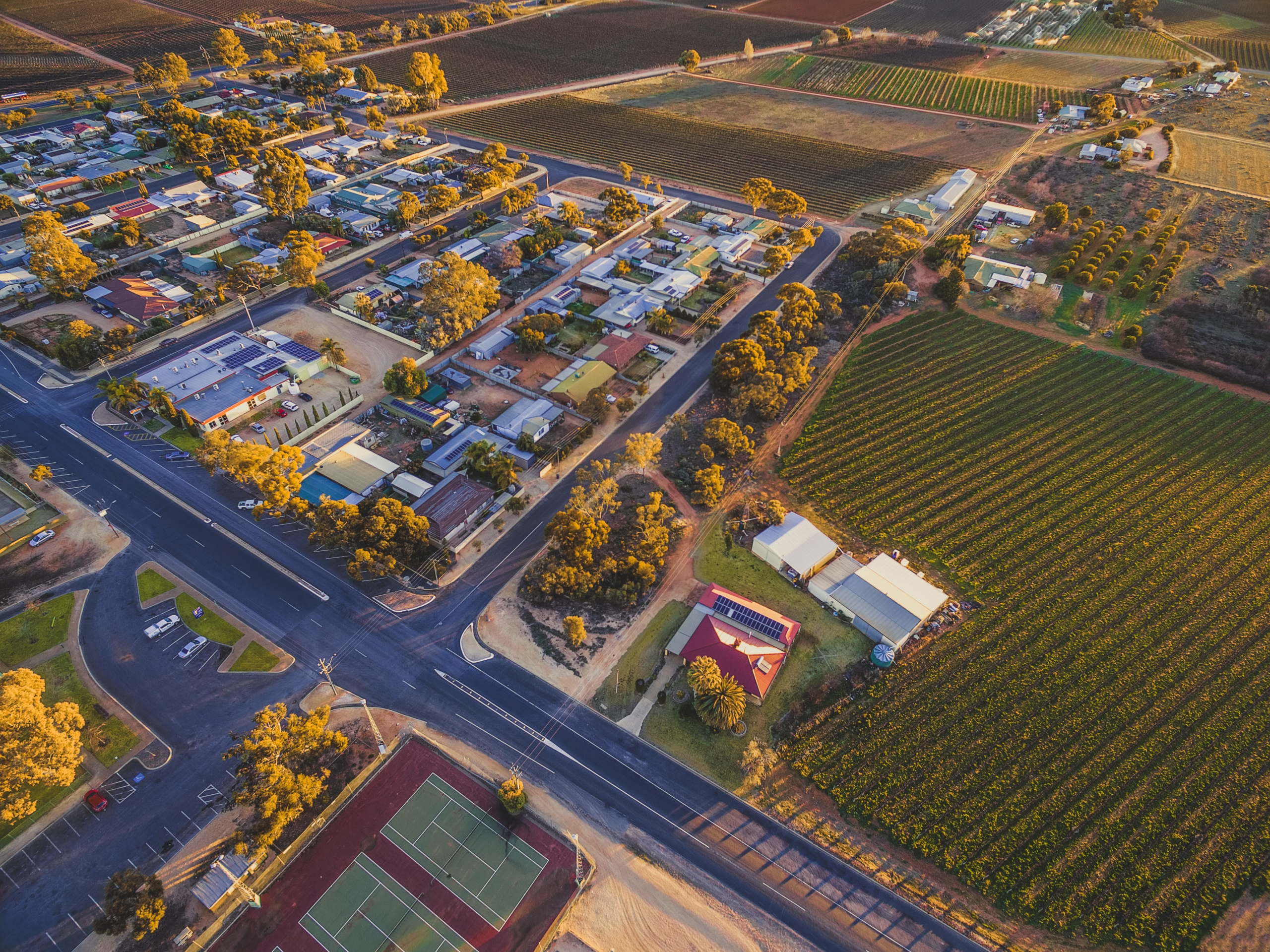- Key Takeaways:
- Home Buying Incentives
- What costs are involved in buying a home?
- Paying a deposit
- Low deposit loans
- Lenders’ Mortgage Insurance
- Stamp Duty
- How much stamp duty will you pay?
- What incentive options are available to first time home buyers?
- New Home Guarantee
- How much deposit will I need to pay?
- How does the New Home Guarantee work?
- Who is eligible for the New Home Guarantee?
- Is there a maximum property threshold?
- How can I apply for the New Home Guarantee?
- First Home Owner Grant
- How much is the FHOG?
- New South Wales
- Queensland
- West Australia
- South Australia
- Family Home Guarantee
- How much deposit will I need to pay?
- How does the Family Home Guarantee work?
- Who is eligible for the Family Home Guarantee?
- Is there a maximum property threshold?
- New South Wales
- Victoria
- Queensland
- How can I apply for the Family Home Guarantee?
- Contact Lendstreet Today!
- FAQs
Key Takeaways:
- Homebuyers pay stamp duty, a large deposit, and sometimes LMI.
- A recommended deposit is usually 20% of the property value.
- Many individuals cannot afford these upfront costs.
- The government has extended incentive schemes to help reduce some costs.
- New Home Guarantee enables first homeowners to pay a 5% deposit on a home.
- Family Home Guarantee enables single parents to pay a 2% deposit on a home.
Did you know that first homeowners in Australia pay up to $6,353 in unexpected costs when purchasing a home? Such costs actually surpass $9,000 in Victoria!
Unexpected costs cover lenders’ fees, government charges, and conveyancing fees. That figure does not include the need to pay stamp duty or the deposit or your property!
Combining the recommended 20% deposit and mandatory stamp duty, buying a house is an expensive activity! If purchasing a $900,000 property in Victoria, your costs could total $240,541!
How many years would it take YOU to save that amount of money?
Home Buying Incentives
Thankfully, the government is helping some people tackle these staggering costs. The 2022 Budget revealed the extension of home-buying incentives for first home buyers and single parents.
These incentives include the New Home Guarantee and the Family Home Guarantee. But, who is eligible for these incentives, and how much money would you save?
Here, we detail the costs involved in buying a home or buy vacant land, explaining the savings you can make.
What costs are involved in buying a home?
Purchasing a residential property is not as simple as paying the price listed on the real estate agent’s website.
What costs can you expect to pay when buying a home?
Paying a deposit
It is usually recommended that potential home buyers pay a 20% deposit when they buy a property. With the median property price in Australia currently surpassing $1,000,000, that 20% down payment can reach around the $200,000 mark.
This figure may take potential homeowners years to save, more so today with surging living costs! But, what choice do individuals have?
To make the situation tougher, the fast-paced property market is dramatically increasing residential property prices.
This increases the level of deposit required by home buyers, which takes them even longer to save!
Low deposit loans
To get a foot on the property ladder, potential home buyers may want to pay a smaller deposit with a low deposit loan.
Some lenders can accept deposits as small as 3% with a low deposit loan, although other stipulations will be included.
You may have to accept a higher interest rate to be considered for a smaller down payment.
This will result in higher monthly mortgage payments and a higher value of payments across the entirety of the mortgage.
Lenders’ Mortgage Insurance
If you pay a deposit below 20%, you may have to pay Lenders’ Mortgage Insurance to safeguard the lender’s relevant interest. This insurance adds a layer of protection for the lender if you stop paying your mortgage across a continuous period.
Unfortunately, Lenders’ Mortgage Insurance is an extra additional cost for homeowners and something else to pay each month! You must pay LMI across a continuous period until your home’s equity has reached 20%.
Stamp Duty
Another cost you must consider when purchasing a house is stamp duty. The amount of stamp duty paid depends on the price of the house and the state you are in.
Stamp duty rates also depend on the type of property, type of buyer, and your citizenship.
How much stamp duty will you pay?
For example, a second home buyer in New South Wales will pay a stamp duty of $31,616 on a property worth $800,000.
But, the same value of property in Victoria will require you to pay a stamp duty of $45,200.
You can calculate exactly how much stamp duty you will pay by using a stamp duty calculator.
What incentive options are available to first time home buyers?
First home buyers in Australia are encouraged to get on the property ladder quickly and easily with a series of incentives. You may be eligible for either the New Home Guarantee scheme or the Family Home Guarantee scheme.
New Home Guarantee
The best incentive available for first home buyers is the New Home Guarantee scheme. The government has extended this scheme past its initial June 2022 end date.
How much deposit will I need to pay?
The New Home Guarantee enables a first home buyer to purchase a residential property with a 5% deposit.
They do not have to pay Lenders’ Mortgage Insurance, ensuring that the first home buyer does not get penalised for a smaller down payment.
In the 2022 Federal Budget, the government extended this scheme for up to 50,000 first home buyers over the next three years.
This extension recognises the damage caused to first home buyers’ finances as a result of the global pandemic.
This damage is compounded further by rising living costs and surging property prices, aiming to close the gap for the ordinary Australian citizen.
How does the New Home Guarantee work?
Under the New Home Guarantee:
- You only have to pay a 5% deposit.
- For example, if your new house is valued at $700,000, you will only have to pay a deposit of $35,000.
- The government guarantees the remaining 15% of the standard deposit.
- There is no need for you to pay Lenders’ Mortgage Insurance.
You can buy a house faster as you have less money to save!
Plus, you will not have increased monthly costs through paying LMI or the higher interest rates of a low deposit loan!
It usually takes an individual many years to save a 20% deposit and purchase their first home. In fact, in Sydney, it can take first homebuyers eight years to save a 20% deposit!
The New Home Guarantee should reduce this period to just a quarter of the time it used to take to save a deposit.
Who is eligible for the New Home Guarantee?
What are the NHG eligibility criteria? To be eligible for the New Home Guarantee, you must meet the following criteria:
- You MUST have first home buyer eligibility and cannot have previously received the NHG.
- You must be at least 18 years old.
- Your yearly income cannot exceed $125,000 before tax.
- For couples, your total household income cannot exceed $200,000 per year. At least one applicant cannot earn above $125,000.
- You must be an Australian citizen.
- The property you are buying must be a residential property.
- You must live there as your primary residence.
- The property cannot be a commercial or investment property.
Is there a maximum property threshold?
If you want to apply for the New Home Guarantee, you should be aware of maximum property thresholds that vary depending on each state.
The most generous state to purchase a property in is NSW, with a threshold of $950,000 in the centre. The threshold reaches $600,000 across the remaining area of NSW.
Across Tasmania, South Australia and West Australia, there are identical property thresholds in place.
In the centre of these states and territories, you can buy a property worth $550,000. In the surrounding areas of these states, your maximum threshold lowers to $400,000.
How can I apply for the New Home Guarantee?
To apply for the New Home Guarantee, you must visit a trusted mortgage broker near you. You will need to complete the application form.
Your professional broker will advise you every step of the way regarding your application.
You can also seek your broker’s advice about which lenders and loans will suit your circumstances!
First Home Owner Grant
An additional incentive that first home buyers may be able to apply for is the First Home Owner Grant or FHOG.
The First Home Owner Grant provides the potential homeowner with a contribution towards the price of a property.
You can only receive this homeowner grant once.
How much is the FHOG?
The First Home Owner Grant FHOG varies between $10,000 and $20,000. The amount of the First Home Owner Grant depends on which state you live in.
However, for a land and house build, you must be the owner-builder.
New South Wales
If you live in New South Wales, first homeowners may be able to secure a $10,000 contribution to their property price.
The property should be new and not previously occupied to qualify for the First Home Owner Grant.
You must be at least 18 years old and an Australian citizen or permanent resident to meet the eligibility criteria.
The house must be your principal residence for at least 12 months after completion.
Queensland
Queensland residents may be eligible for a grant of $15,000. You must be at least 18 years old and a citizen of Australia or a permanent resident.
The home must be new and cannot exceed a value of $750,000. You must also live in the property as your principal place of residence for at least 12 months.
West Australia
Natural persons who are at least 18 years old may be able to apply for a first homeowner grant of $10,000.
The house must be new, and you must be a citizen of Australia or a permanent resident. You must intend to live on the property for at least 12 months as your principal place of residence.
South Australia
South Australia residents can apply for a $15,000 contribution, but the property’s maximum value is $575,000.
Once again, you must be 18 years old or more, and you must be an Australian citizen or permanent resident. You must aim to live in the house for at least 12 months.
Family Home Guarantee
In addition to the first home buyer incentive of the New Home Guarantee, single parents can benefit from the Family Home Guarantee.
Recognising the difficulties in saving a deposit with one household income, single parents can buy a home with a reduced deposit.
How much deposit will I need to pay?
The Family Home Guarantee enables a single parent to put forward just a 2% deposit. The individual can be a previous property owner.
How does the Family Home Guarantee work?
If you want to apply for the Family Home Guarantee, how much money will you have to save for a 2% deposit?
If your dream home has a market value of $700,000, a 2% deposit will amount to $14,000.
This is a more attainable deposit figure than the standard 20% deposit, which would total $140,000 on a $700,000 property.
The government will guarantee the remaining 18% of your deposit so the lender does not require that you pay any Lenders’ Mortgage Insurance.
This means that you do not have an additional monthly cost to pay amidst other increasing living costs.
Who is eligible for the Family Home Guarantee?
To be eligible for the Family Home Guarantee, you must meet the following criteria
- You must be aged at least 18 years old.
- You must be a single parent with at least one child living permanently with you.
- You should be the natural or adoptive parent of that child.
- A parent of a child aged between 16 years and 22 years old in receipt of a disability support pension
- You must be an Australian citizen.
- You must not earn above $125,000 per year before tax, excluding child support payments.
- Your name must be on the loan as well as the certificate of title.
- The property you want to buy must be a residential property.
You can use this incentive to buy a previously owned property, either as a house or apartment. You can also purchase off-plan properties.
A house and land package, or separate contracts to build a home, are also eligible for the Family Home Guarantee.
Is there a maximum property threshold?
If you are hoping to apply for the Family Home Guarantee, you must consider the maximum property thresholds in your state.
The threshold figures take into account the property market in each state and the rising values present in capital cities and centres.
New South Wales
The maximum property value can be $800,000 in the centre of NSW and $600,000 across the rest of the state.
Victoria
The maximum value of a house can reach $700,000 in the centre of Victoria and $500,000 in the rest of the area.
Queensland
You can find a property worth $600,000 in the centre of Queensland and $450,000 across the remaining locality.
How can I apply for the Family Home Guarantee?
To apply for the Family Home Guarantee, you must contact a professional mortgage broker and complete the necessary forms.
Your mortgage broker will provide advice along the way and can also help you explore loans and lender options!
Contact Lendstreet Today!
Visit Lendstreet to discuss your options with a specialist broker and approved agent! We can provide you with impartial advice to secure the best options and incentives for you considering your personal situation!
Call 1300 317 0412 to speak directly with a professional, or book a discovery call here!
Get the latest news and updates from Lendstreet
Join and subscribe to our newsletter.
FAQs
How does the New Home Guarantee work?
Put simply, the government acts as a guarantor for three-quarters of your deposit. You can buy a home faster without saving for a 20% deposit.
To be eligible, you must be a first home buyer. You cannot earn above $125,000 as a single applicant or $200,000 as a joint applicant. Using this scheme, you can buy a new build, an off-plan property, or a house and land package.
Property thresholds vary across states. For example, property in the centre of NSW can reach $900,000 in the centre and $600,000 in surrounding NSW areas.
How does the Family Home Guarantee work?
Just like the New Home Guarantee, the government acts as a guarantor for part of your deposit. With the Family Home Guarantee, you could pay as little as a 2% deposit on a new home.
You must be a single parent with at least one dependent child and earn less than £125,000 per year. This threshold does not include child support payments, however.
Maximum property thresholds vary across different states, and you can buy an established home. For example, the maximum price of a property in central Victoria can reach $700,000. Property in the surrounding locality of Victoria can not surpass $500,000.
How much could I save on the New Home Guarantee or the Family Home Guarantee?
Purchasing a property in central NSW allows you a maximum property threshold of $900,000 on the NHG scheme. Usually, a 20% deposit on a house of this value will total $180,000! Using the NHG scheme, you will only have to pay $45,000 as a deposit.
If purchasing a house in central Victoria, you can choose a property up to a maximum $700,000. Usually, you will have to pay $140,000 as a 20% deposit. Under the FHG scheme, you will only have to pay a 2% deposit, totalling only $14,000.
How much LMI do I have to pay?
Usually, when paying a deposit of less than 20% of the property value, you have to pay Lenders’ Mortgage Insurance. LMI is insurance that you have to pay to safeguard the lender’s interest. LMI does not reduce the amount of money you owe on the home loan.
If you are successful in applying for the New Home Guarantee or the Family Home Guarantee then you pay no LMI. You are able to pay a reduced deposit with the government acting like a guarantor for the remaining deposit.
Schedule a call to one of our expert mortgage broker
Ask our expert mortgage brokers anything about home loans.
Related articles
Applying for a home loan isn't a walk in the park for most first home buyers, especially when you're ...
Homeownership is a long, challenging, and expensive road, along which you’ll encounter expenses such as stamp duty, land tax, ...
With the Australian real estate market taking a hit in 2022 thanks to increasing mortgage rates, buying a house ...









